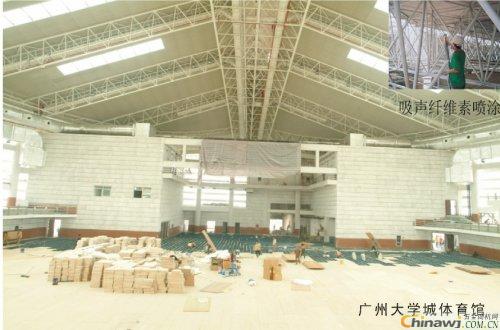Sound absorption principle
Sound Absorption Principle
Porous sound-absorbing materials, such as centrifugal glass wool, rock wool, mineral wool, and plant fiber sprays, work by allowing sound waves to penetrate through a network of tiny, interconnected pores within the material. As the sound waves travel through these pores, they rub against the material's surface, converting sound energy into heat. This is the fundamental mechanism behind porous sound absorption. The sound absorption coefficient of porous materials typically increases with frequency, meaning they are more effective at absorbing high-frequency sounds than low-frequency ones. For this reason, porous materials are often used in environments where reducing high-pitched noise is important. However, their effectiveness depends on several factors, including the density, thickness, and porosity of the material. A common misconception is that any material with a rough surface has sound-absorbing properties. In reality, surfaces like brushed cement or stone do not absorb sound effectively because the texture alone does not allow for internal sound wave penetration. Another misunderstanding is that materials with many holes, such as closed-cell polyurethane or polystyrene, are good sound absorbers. These materials, however, lack the necessary connectivity between pores, so sound waves cannot travel through them efficiently, resulting in poor sound absorption. When a perforated plate is placed over an air cavity, such as in a ceiling or wall, it can significantly improve sound absorption, even if the material itself is not highly absorptive. This is known as Helmholtz resonance sound absorption. The principle is similar to how a thermos bottle resonates when you blow into it. The sound waves enter through small openings and resonate within the cavity, causing energy loss and sound reduction. This type of absorption is most effective at specific frequencies, making it ideal for targeted noise control. Thin sheets or membranes placed over a cavity, such as wood panels or metal sheets, also contribute to sound absorption. This method, called thin plate resonance absorption, works best at low frequencies. When sound waves hit the sheet, they cause it to vibrate, which helps dissipate the sound energy. This technique is often used in acoustic treatments for rooms where low-frequency noise needs to be controlled. In general, the principle of sound absorption involves creating pathways for sound to enter and become trapped within the material. These pathways may consist of tiny holes or gaps formed by fibers or structures. Once inside, the sound waves travel through these channels, colliding with the material and gradually losing energy. This process leads to reduced noise levels and improved acoustic performance.
Porous sound-absorbing materials, such as centrifugal glass wool, rock wool, mineral wool, and plant fiber sprays, work by allowing sound waves to penetrate through a network of tiny, interconnected pores within the material. As the sound waves travel through these pores, they rub against the material's surface, converting sound energy into heat. This is the fundamental mechanism behind porous sound absorption. The sound absorption coefficient of porous materials typically increases with frequency, meaning they are more effective at absorbing high-frequency sounds than low-frequency ones. For this reason, porous materials are often used in environments where reducing high-pitched noise is important. However, their effectiveness depends on several factors, including the density, thickness, and porosity of the material. A common misconception is that any material with a rough surface has sound-absorbing properties. In reality, surfaces like brushed cement or stone do not absorb sound effectively because the texture alone does not allow for internal sound wave penetration. Another misunderstanding is that materials with many holes, such as closed-cell polyurethane or polystyrene, are good sound absorbers. These materials, however, lack the necessary connectivity between pores, so sound waves cannot travel through them efficiently, resulting in poor sound absorption. When a perforated plate is placed over an air cavity, such as in a ceiling or wall, it can significantly improve sound absorption, even if the material itself is not highly absorptive. This is known as Helmholtz resonance sound absorption. The principle is similar to how a thermos bottle resonates when you blow into it. The sound waves enter through small openings and resonate within the cavity, causing energy loss and sound reduction. This type of absorption is most effective at specific frequencies, making it ideal for targeted noise control. Thin sheets or membranes placed over a cavity, such as wood panels or metal sheets, also contribute to sound absorption. This method, called thin plate resonance absorption, works best at low frequencies. When sound waves hit the sheet, they cause it to vibrate, which helps dissipate the sound energy. This technique is often used in acoustic treatments for rooms where low-frequency noise needs to be controlled. In general, the principle of sound absorption involves creating pathways for sound to enter and become trapped within the material. These pathways may consist of tiny holes or gaps formed by fibers or structures. Once inside, the sound waves travel through these channels, colliding with the material and gradually losing energy. This process leads to reduced noise levels and improved acoustic performance.

OTC Blue Type Welding Torch also has three types : the 200A type ,the 350A type ,the 500A type .The custom can choice the torch according to the rating,the duty cycle ,the wire size you use .
The OTC type welding torch has its own charactiscis as followes :
1. Interchangeable with the best know brand
2 .Ergonomics handle
3. Front and rear cable protection spring
4. Articulation to ease cable bending
5. Euro with mobiles pins
6 .Different adaptors available

OTC Type Welding Torch, OTC Type 350A Mig Torch, OTC Type Mig Torch, OTC Type 200A Mig Torches, OTC Type 500A Mig Torch
EDAWELD COMPANY LIMITED , https://www.jsedaweld.com